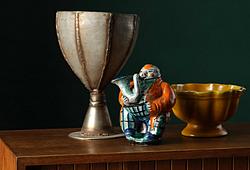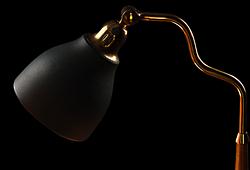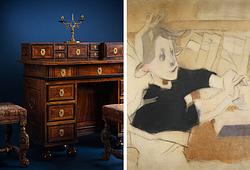Carl Malmsten
A Carl Malmsten Swedish Grace pewter top table, executed by Nordiska Kompaniet for Grand Hotel Stockholm ca 1925.
The top engraved with garlands and other ornaments, the black lacquered base on three lionpaw feet, marked with metal label NORDISKA KOMPANIET R 1730 C 16968. Height 65,5 cm, diameter 48 cm.
Slight wear, two paws with minor repairs.
Provenance
The Grand Hotel, Stockholm.
Literature
Lena Blomquist, 'Carl Malmsten känd och okänd', Jure Förlag, Stockholm 2012. Compare the model illustrated p 167.
More information
The Grand Hôtel in Stockholm first opened in 1874.
In 1924-26 a major restauration took place under the lead of the architect Ivar Tengbom. The interiors were mainly furnished by Carl Malmsten. This is one of a few tables standing between lounge chairs in the main foyer.
Designer
Carl Malmsten is one of Sweden's most famous furniture designers. Many of his furniture are considered modern design classics, for example, the cane chair "Lilla Åland", the armchair "Farmor", the sofa "Samsas", the cabinet "Herrgården", and the furniture series "Vardag".
Both "Lilla Åland" and "Vardag" adopted the ideals of "beautiful everyday goods" of the 1940s. Their neat shape and frugal design quickly became timeless interior details that we still see in many homes today.
At the beginning of his career, Malmsten interned at various carpentry workshops and studied furniture at Nordiska museet and Skansen. He had his breakthrough in 1916 when he was commissioned to design part of the interior of Stockholm's City Hall.
During his career, Malmsten collaborated with several architects, such as Ragnar Östberg, Ivar Tengbom, and Ferdinand Boberg. He designed furniture for Stockholm's concert hall and Ulriksdal castle. He participated in the now iconic hosing exhibition at Liljevalchs gallery in 1917, where the term "Beautiful everyday goods" was coined.


































































